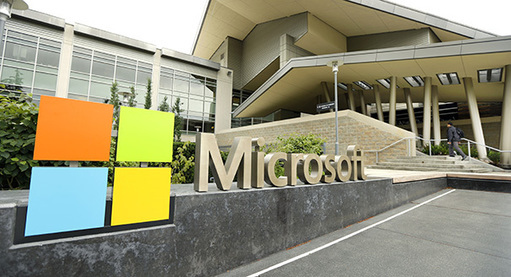Microsoft uncovered historical aspects of Windows development.
A few days ago, Microsoft published very interesting information, which we could not pass by. The published article was called The Engineer's Engineer: Dave Cutler's five-decade-long quest for quality and was dedicated to the honored Microsoft engineer and the first Windows NT architect Dave Cutler, who laid the foundation for all versions of Windows since 1993.

It is known that Windows NT was developed as a server operating system and it went a long way to evolution before appearing in all its glory to home users in the form of Windows 2000 and Windows XP. Not many people know that, in fact, the entire Windows NT operating system family, from its very first versions to Windows 10, is based on one of the first fully 32-bit operating systems from Digital Equipment Corporation called VAX VMS, which is based on UNIX.
')
We provide the most significant excerpts from the above article with our comments.

Fig. Dave Cutler.

Fig. Cutler with Solomon and Russinovich, the authors of the famous book Windows Internals.

Fig. Windows NT logo.

Fig. Digital VMS architecture.

Fig. Windows NT architecture.
See also Windows NT and VMS: Windows VistaPro/windows-client/windows-nt-and-vms-rest-story

It is known that Windows NT was developed as a server operating system and it went a long way to evolution before appearing in all its glory to home users in the form of Windows 2000 and Windows XP. Not many people know that, in fact, the entire Windows NT operating system family, from its very first versions to Windows 10, is based on one of the first fully 32-bit operating systems from Digital Equipment Corporation called VAX VMS, which is based on UNIX.
')
We provide the most significant excerpts from the above article with our comments.
In 1976, Digital Equipment Corporation (DEC) [or simply Digital] was on the wave of success and was considered a successful computer company. [Digital not only specialized in developing its own operating system, but also hardware for it] Together with other companies such as Data General, Prime Computer and other IT companies that were located along the so-called. Highway 128 (Massachusetts Route 128), DEC formed the computer landscape of the time [releasing minicomputers] .
At the same time, engineer Gordon Bell , already known at the time, who worked at Digital in a high position, was concerned about the decline in sales of the flagship 16-bit minicomputer of the company known as PDP-11 [ working on RSX-11 OS ] . Another concern for DEC managers was the fact that IBM developed the first [ micro ] computer.
Bell decided to use his vision of the future, putting on the creation of a new 32-bit minicomputer called VAX with the new OS [ VMS ] , which will provide backward compatibility with applications for the PDP-11 minicomputer. Then Bell turned to David Cutler , who, at that time, was 33 years old. He was considered a promising Digital Engineer, and he also had experience developing RSX-11. Bell asked Cutler to lead the VAX [Virtual Address Extension] development project.
Two years later, the first copies of VAX minicomputers saw the light on Digital production. At the same time, VAX immediately secured its position as a leader in this market. Then Bell called Cutler the best "best operating system developer in the world."

Fig. Dave Cutler.
In 1982, Cutler met with Bell and announced his departure from the DEC, which came as a complete surprise to him. In turn, the DEC management was not going to just part with its most talented engineer, although it was suspected that his dissatisfaction related to the growing bureaucracy in the Digital leadership. Cutler made a counter offer from which he could not refuse. Thus was created a subsidiary of DECWest.
The office of the new company is located at a distance of 3 thousand miles from the headquarters of Digital: in Bellevue, Washington, that is, not far from Seattle and Microsoft. Young engineer Len Kawell was one of the first talented specialists of this company. Specialists gathered to develop a real-time OS (real-time) for VAX, but as a result, a new MicroVAX computer was created, as well as a real-time OS for it called VAXeln. Cutler took over the development of new hardware, and Len Kawell was responsible for creating software.
Kawell said that Cutler has a unique vision of the functions of iron (hardware), which distinguished him from other engineers of the time. He thought at the level of machine instructions and register operations of the microprocessor. However, in 1988, Cutler left Digital, and the new MicroVAX computer and OS did not see the light for him. After that, Cutler went to Microsoft, met Bill Gates five years before that. For him, a new OS project was already ready, which was destined to make a real revolution in the field of microcomputers.

Fig. Cutler with Solomon and Russinovich, the authors of the famous book Windows Internals.
After negotiations with Bill Gates in 1988, Cutler decided to switch to Microsoft to create a real 32-bit OS for microcomputers. He was also joined by a team of engineers from a previous project: five OS development specialists and six hardware specialists.
Cutler's team began developing a new OS for Microsoft in April 1989, the work was carried out more than ten hours a day, sometimes without days off. The main task in the development of Windows NT was the portability of the future OS, i.e., the possibility of its operation not only on Intel x86 microprocessors, but also on RISC architectures, which were popular at the same time and provided better performance compared to x86 . At the same time, Microsoft experts have already collaborated with IBM in a new OS development project called OS / 2 . But OS / 2 had obvious flaws, firstly it was 16-bit, and secondly it was not portable and could only work on Intel microprocessors.
The goals of developing Windows NT were complex and ambitious. Cutler’s team had to ensure that the following requirements were met:
- Support for various microprocessor architectures [at the source level] , including, MIPS, Alpha, PowerPC, and x64.
- Support for running other OS applications [subsystem model] , including UNIX POSIX , OS / 2 and Win32.
- The OS must be safe and comply with C2 ( trusted computer certification ).
- Support for multiple microprocessors running simultaneously ( multiprocessor architecture ) and true multitasking. Both of these functions were considered unique at that time for the PC segment.

Fig. Windows NT logo.
One of the most difficult tasks that the developers had to solve was the task of testing the OS being developed. At an early stage, the team did not have all the necessary resources to develop the right set of tests. Instead, they made a choice in favor of a dynamic stress tolerance testing system, which created a high load on the system as a whole. Every night, the developers launched the stress tests of the new OS on hundreds of machines. In the morning, the Windows authors came to the office and sorted the errors for later analysis.
It is interesting to note that initially Windows was not considered Win32, but OS / 2 as the main subsystem, but later Microsoft abandoned this idea. [As with the development of OS / 2 itself] This was partly due to the rapidly gaining popularity of Windows 3.1, whose sales amounted to 16 million copies in six months. As a result, the 16-bit Windows API was taken as a basis and expanded to 32 bits. For the new OS, its own 32-bit graphics subsystem was also written. Later, developers were forced to adapt Windows NT to a RISC microprocessor MIPS R3000 instead of the originally declared Intel i860 XR. Another problem that needs to be solved was the compatibility of the new OS with legacy MS-DOS and 16-bit Windows applications.

Fig. Digital VMS architecture.

Fig. Windows NT architecture.
Windows NT 3.1 was released on July 27, 1993. In 1996, Catler left the leadership of the entire Windows NT project and concentrated on the leadership of the kernel development team until 2006. In March 2005, Catler finished part of the work of porting Windows NT to the AMD64 platform when the first 64-bit versions for workstations and servers.
See also Windows NT and VMS: Windows VistaPro/windows-client/windows-nt-and-vms-rest-story
Source: https://habr.com/ru/post/281855/
All Articles